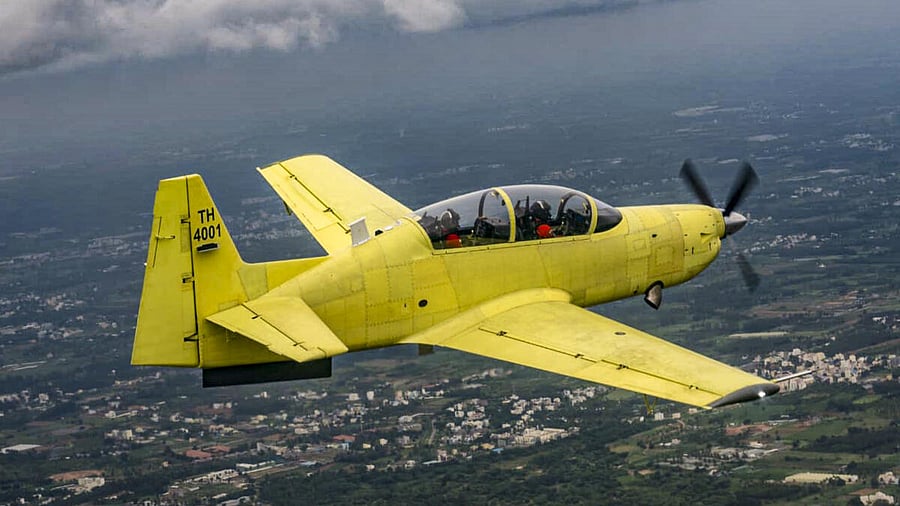
Hindustan Turbo Trainer-40 (HTT-40) Series Production aircraft, TH 4001.
Credit: X/ @HALHQBLR
New Delhi: The first indigenous Hindustan Turbo Trainer-40 (HTT-40) Series Production aircraft, designed to train India’s next generation of air warriors, took to the skies in Bengaluru on Friday.
Named TH 4001, the basic trainer aircraft is a fully aerobatic, tandem-seat, turboprop model built to provide training in basic flight, aerobatics, instrument flying, and night flying, according to officials at Hindustan Aeronautics Limited (HAL), the aircraft’s manufacturer.
While HTT-40 prototypes have been flying for eight years, this is the first Series Production unit — the version built on HAL’s industrial production line, from which all future aircraft of this type will be manufactured.
In 2023, the Defence Ministry signed a Rs 6,800-crore contract with HAL for 70 basic trainer aircraft for rookie Indian Air Force (IAF) pilots. The TH 4001 that flew from the HAL facility on Friday will be among those 70.
Sources said it would take two to three months for the HTT-40 to receive final operational clearance from the regulatory agency. However, US major Honeywell’s delay in supplying the first batch of six TPE331-12B turboprop engines has disrupted HAL’s delivery schedule.
HAL had earlier promised to hand over the first aircraft to the IAF by September 2025, but the unavailability of engines has pushed the timeline further.
Currently, the IAF uses Pilatus PC-7 aircraft for basic flying training, after phasing out HAL’s HPT-32 “Deepak” trainers in 2014.
The Air Force requires 181 basic trainer aircraft but currently has only 75 Pilatus PC-7s, with the remaining 106 expected to be HTT-40s.
Approved by the government in 2011, the HTT-40 has taken nearly 15 years to reach this stage and is yet to be inducted into service. The shortage of both basic and intermediate trainer aircraft remains one of the key reasons for the IAF’s lower pilot intake.
Last week, Defence Minister Rajnath Singh inaugurated the second production line of the HTT-40 at HAL’s Nashik complex. The aircraft currently contains about 56% indigenous content, which HAL says will increase to over 60% through further indigenisation of major components and subsystems.
